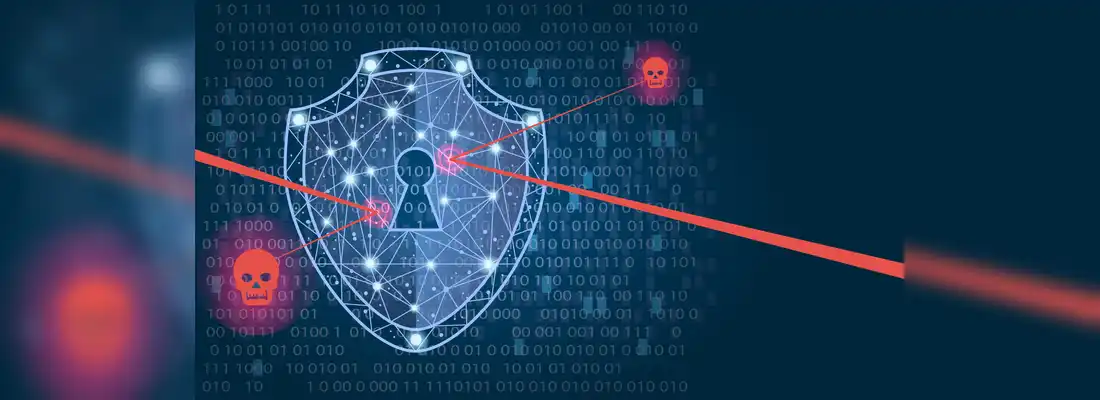Creating a Culture of Cybersecurity in Your Organisation
Date: 21 March 2024
.webp?width=500&name=92520219_m_normal_none%20(1).webp)
Building a cybersecurity culture is crucial for organisations of all sizes due to the growing number of cyber attacks in the current threat landscape. As these attacks become more frequent and severe, businesses must prioritise implementing cybersecurity measures to protect their information.
While some might have qualifications such as an online MBA in Cybersecurity, establishing a healthy cybersecurity culture overall can be daunting for companies without extensive teams or budgets.
In this blog post, we will explore the significance of cultivating a cybersecurity culture from the ground up within your organisation. By doing so, you can enhance your ability to safeguard your business and its valuable data against cyber threats. You can also build better resilience against cyber attacks if they do end up impacting you.
Defining and Understanding Cybersecurity
Defining and comprehending cybersecurity is essential for anyone who works or operates online. Cybersecurity, in the simplest form, refers to the safeguarding of systems, networks and programmes from attacks. These attacks usually aim to gain access, manipulate or destroy information, extort money from users or disrupt regular business operations. But implementing robust cybersecurity measures can be challenging now as there are more devices than people and attackers are constantly evolving their methods.
Effective strategies typically involve employing layers of protection across computers, networks and information. Overall, it's vital for people, processes and technology to work together—complementing one another—to establish a robust defence against cyber attacks.
Common Types of Cyber Attacks
Cyber attacks today have become more sophisticated than ever before as cybercriminals continue to refine their methods of infiltrating organisations. It is crucial for us to comprehend the most common attacker techniques in order to enhance the protection of our devices.
One prevalent form of cyber attacks is ransomware, which involves attackers encrypting an organisation's data and demanding a ransom, in exchange for a decryption tool. These attacks are typically initiated through phishing links that allow access to data and permissions, enabling the encryption of files and subsequent ransom demands.
Another type is distributed denial of service (DDoS) where an organisation's website is overwhelmed with traffic causing it to crash and denying users access to its services. This method involves sending traffic from sources overwhelming the website until it cannot handle the influx. For more established websites it may require more significant amounts of traffic to disrupt their services successfully. But for smaller businesses, a typical DDoS attack is enough to cause serious operational and financial disruption.
How to Build A Culture of Cybersecurity in Your Organisation
Establishing a culture of cybersecurity within your organisation goes beyond being a necessity; it has become a strategic imperative today. In the world that we live in, cyber threats loom large and every employee must understand their role, in safeguarding the company's assets. Let's explore some ways to foster a culture of cybersecurity, within your organisation. Because remember, the human element is the weakest link in the chain and that's the one cyber criminals first seek to attack.
Regular Training in Cybersecurity Awareness
It is crucial for both individuals and companies to prioritise training and education on the evolving cyber threats. We should never underestimate the risks associated with compromised sensitive information. By emphasising continuous learning, one can ensure that people are well informed about the tactics of cyber threat actors and are equipped with best practices to safeguard their devices and online identities.
Encouraging Open Communication about Security Concerns
It's critical to create an environment where employees feel reporting potential security threats is paramount. Encouraging communication allows us to identify vulnerabilities before they turn into full-fledged cyberattacks, thereby minimising financial losses and preserving business reputation. You can do this by stressing the importance of communication and assuring your staff that reporting any amiss is safe and will be treated seriously, including a mistake they may have made. Some might even offer incentives for communication of concerns or for honestly reporting inadvertent clicks or downloads.
Implementing Strong Password Policies
Weak passwords serve as easy entry points for cybercriminals. To protect your assets, it's essential that you establish password policies that include multi factor authentication requirements as well as regular password changes. Additionally educating employees about creating strong passwords and using multi-factor authentication is vital. Also remind them not to share their login credentials with anyone. This might sound simple but cannot be overlooked as an effective method of cyber protection.
Regular Software Updates and Patches
As software vulnerabilities are continuously discovered, it becomes imperative for organisations to stay vigilant while applying updates and patches promptly. This proactive approach helps thwart cybercriminals who're swift, in exploiting these weaknesses.
Organisations need to make sure they regularly update their software with security patches to prevent vulnerabilities from being exploited. This does not only apply to operating systems and applications. It also extends to network equipment and IoT devices.
Dealing with Cyber Attacks
While we can take measures to safeguard ourselves it's essential to have a plan in place for dealing with cyber attacks in case prevention fails. Cybersecurity Incident Response becomes pivotal here. Otherwise you could face serious damage in the event of a cybersecurity incident. Let's explore some steps and tips that can help us effectively handle breaches.
Creating an Incident Response Plan
When a cyber attack is detected, taking immediate action is crucial in order to minimise the impact. That’s why every organisation needs to have a solid cyber incident response plan that outlines a structured process to effectively identify, respond, and recover from any unexpected cybersecurity incidents. Implementing an incident response plan will provide you with a clear set of instructions and guidelines for responding to different cyber attack scenarios, including data breaches, malware outbreaks, data loss, DoS or DDoS attacks, and other security breaches.
By having this plan in place, you can help reduce the effects of security events and potentially limit the operational, financial, and reputational damage done to the organisation. You must also make sure that they key incident responders in your business rehearse this plan regularly with Cyber Attack Tabletop Exercises. These exercises build muscle memory and help your executive leadership practise decision-making for cybersecurity events.
Communicating with Stakeholders about the Incident
It's important to establish communication channels for when an attack does occur. It should be clear who the relevant stakeholders are, including management and affected clients, and who will inform them about what has happened. Transparency is key here along with compliance with regulatory requirements. Effective communication will aid in managing any damage while preventing information or rumors from circulating.
Learning from the Attack and Conducting a Post-Incident Review
After dealing with the response it is essential to analyze the attack to identify any vulnerabilities in the organization's security measures. This analysis will help prevent incidents from occurring in the future. Furthermore, conducting an incident review should involve assessing how effectively the organization handled the situation and identifying any areas for improvement in their response plan.
Conclusion
It is vital never to underestimate the evolving nature of cyber attacks. As technology advances so do the tactics employed by cyber attackers. It is crucial for both individuals and businesses to stay updated and informed about trends in cyber security.
By implementing defence mechanisms and adhering to protocols we can safeguard ourselves against potential attacks. Let us not wait for another data breach before taking action. Prioritise safety, knowledge and protection at all times and stay safe out there.







-1.webp)
